Emperor Penguin Facts
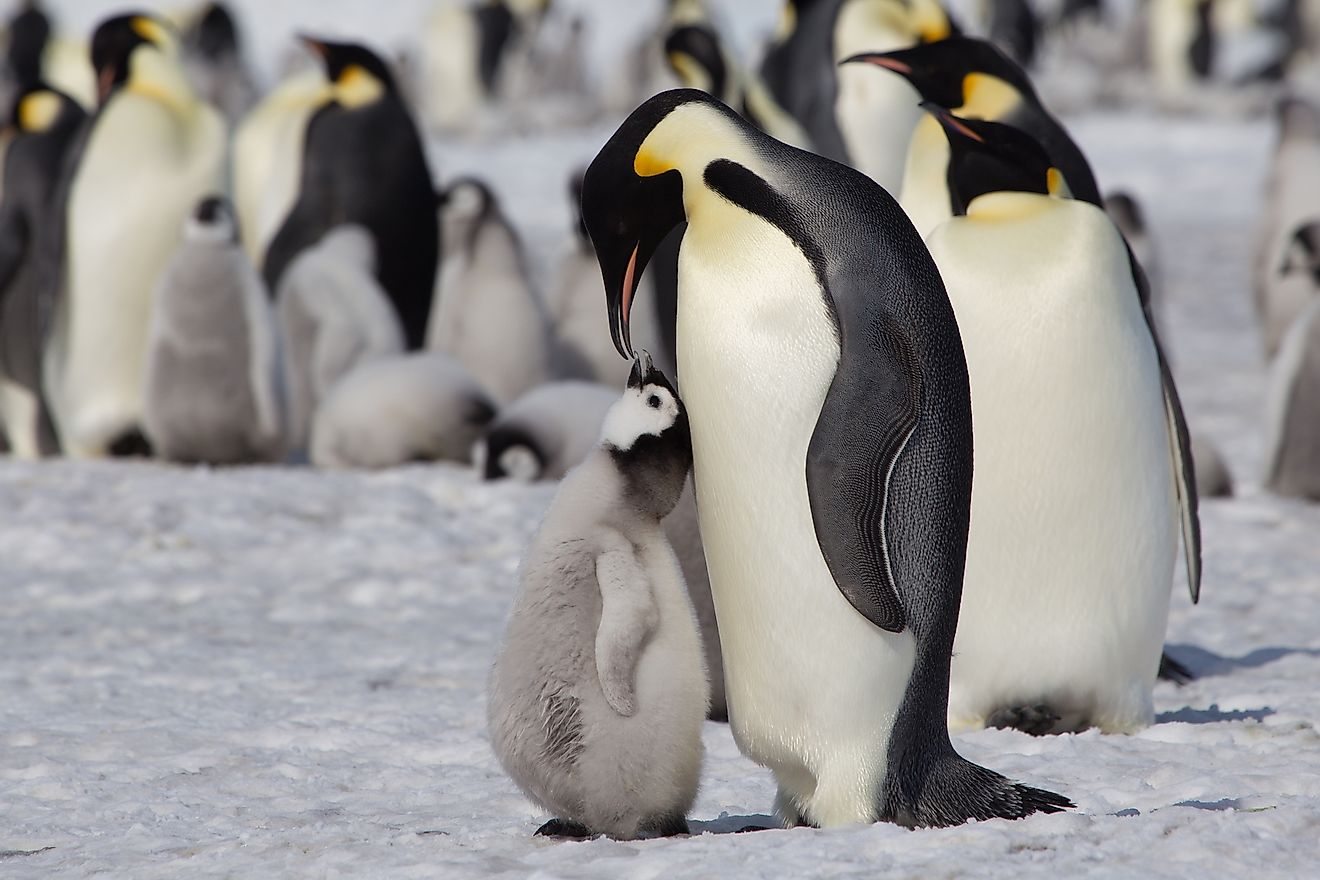
- Emperor penguins are the largest penguins in the world. They can grow up to around 115 to 122 cm tall—around the size of an average six-year-old child.
- Emperor penguins live in large colonies composed of around 5,000 to 10,000 penguins. These colonies are called “Rookery,” “Waddle,” or a “Penguinery.”
- During harsh cold and windy weather, penguins in the colony will huddle, forming a circle. The youngest members of the colony will stay in the middle of the circle where it is warmest and adults will stay in the outer circles.
Much of what we’ve learned about emperor penguins from the movie Happy Feet is true. They live in large colonies composed of thousands of penguins, they are great divers (able to dive longer and deeper than any other penguin), and a female will leave the egg with the male before setting out to hunt for food. The male will then incubate the egg for around 65 to 75 days until it hatches.
But they don’t tap dance and sing like that in real life. Instead, they make loud calls to identify each other which according to scientists can be heard even from a kilometer away!
Here are a few other facts about these fascinating birds that live on the coldest continent.
Scientific Name
The emperor penguin’s scientific name is Aptenodytes forsteri. They’re birds that belong to the family Spheniscidae and one of the two species in the genus Aptenodytes.
Taxonomic Position
- Phylum: Chordata
- Class: Aves
- Order: Sphenisciformes
- Family: Spheniscidae
- Genus: Aptenodytes
- Species: forsteri
- Binomial Name: Aptenodytes forsteri (Gray, 1844)
Where Do Emperor Penguins Live?
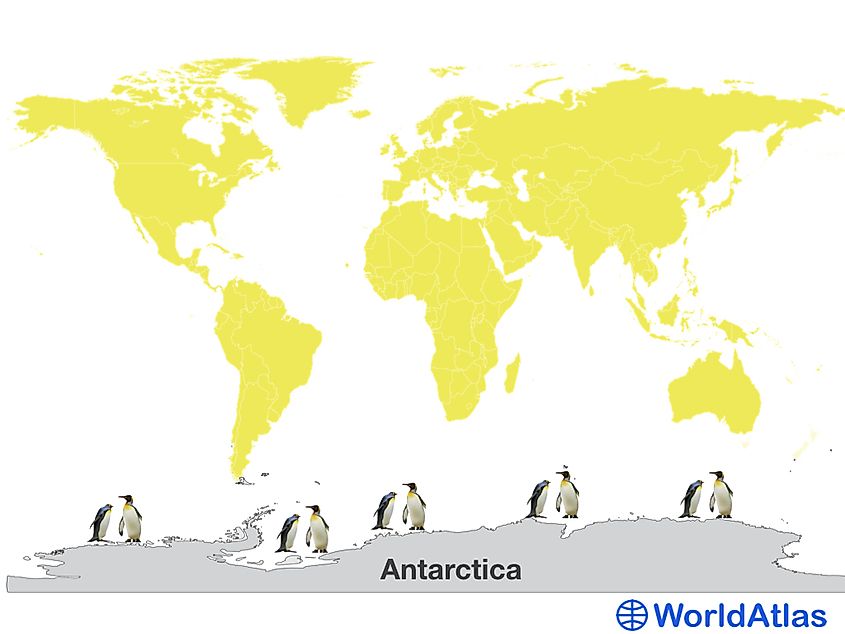
These penguins are endemic to Antarctica, the Earth’s southernmost continent, and is the coldest, windiest, and driest continent on the planet. They spend their lives on Antarctic ice near the waters where they hunt for food. They don’t build nests. Instead, males keep the egg on their feet and cover it with a feathery skin called a brood pouch.
Emperor penguins live in large colonies composed of around 5,000 to 10,000 penguins. These colonies are called “Rookery,” “Waddle,” or a “Penguinery.”
What Does An Emperor Penguin Look Like?
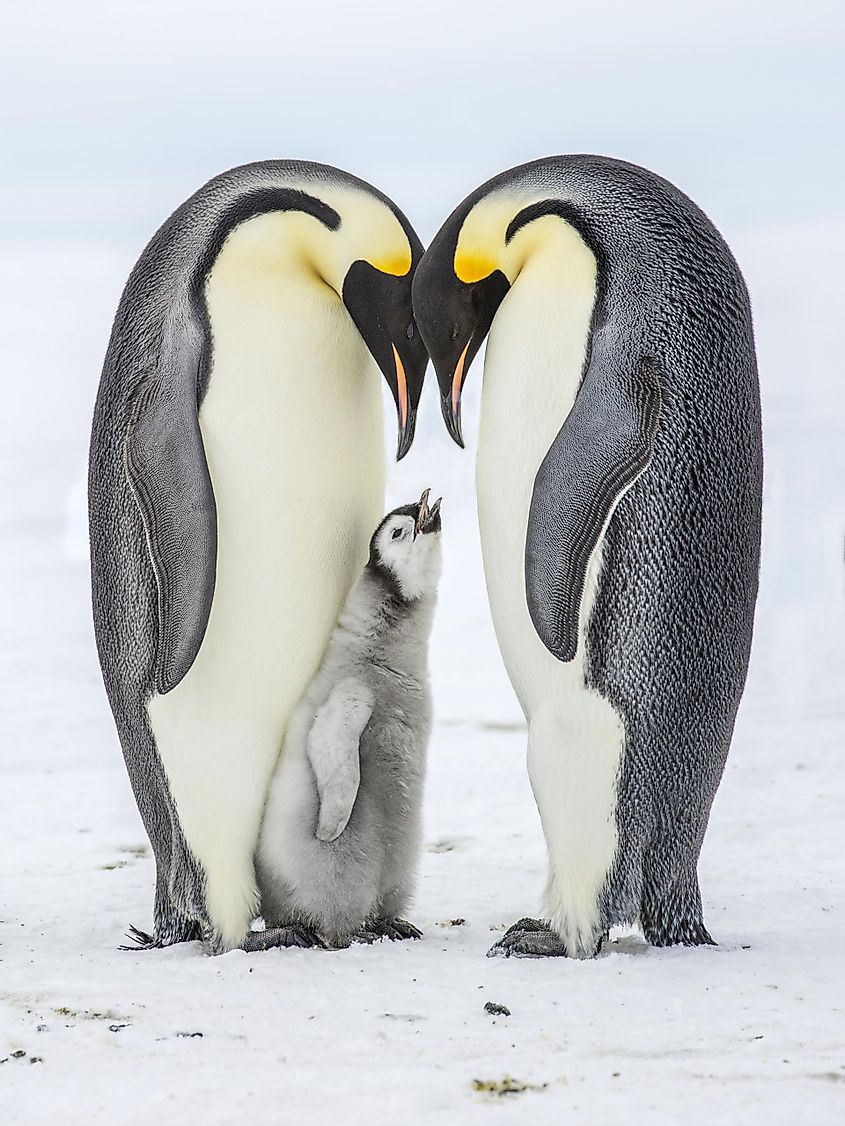
Emperor Penguin Height: They are the largest penguins in the world. They can grow up to around 115 to 122 cm tall—around the size of an average six-year-old child!
Emperor Penguins Weight: Emperor penguins store fat around their bodies to protect them from the cold thus they can weigh up to 40 kgs.
The body is streamlined and wings are modified into flippers that help them swim in the ocean.
The males and females have similar plumage and size. They have a black head and back, white belly, bright-yellow ear patches, and pale-yellow breast.
Emperor Penguin Diet
Their main diet is fish but they can also eat other marine animals like crustaceans and cephalopods. They find their food in the open seas or cracks in the ice. They are great divers and can dive deeper than any other penguin in the world. They can deep dive to depths of almost 550 meters. They can even stay under the icy cold water for up to 20 full minutes at a time.
Emperor Penguin Life Cycle
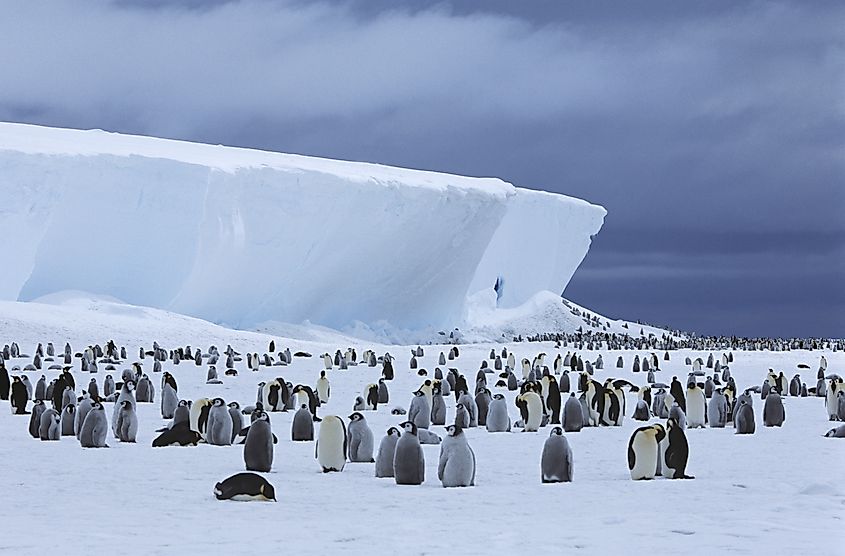
Emperor penguin colony in Antarctica. Image credit: Sirtravelalot/Shutterstock.com
Emperor penguins become sexually mature at around 3 years of age. In April each year, they begin their march and travel around 50 kilometers to their breeding grounds. Males give out a loud call to attract females. Once they’ve found a mate they’ll stay as a couple throughout the season. They are serially monogamous which means they will stick to just one partner throughout the season but find a different one the next season.
The female will lay one egg that weighs over 400 grams then she heads out to sea to look for food. The male will take over and incubate the egg by putting it on his feet. Males keep the egg in a feathery pouch for around 65 days. Males will not eat and instead guard the eggs throughout this period. He will keep it safe and warm throughout bouts of intense cold and chilly Antarctic winds.
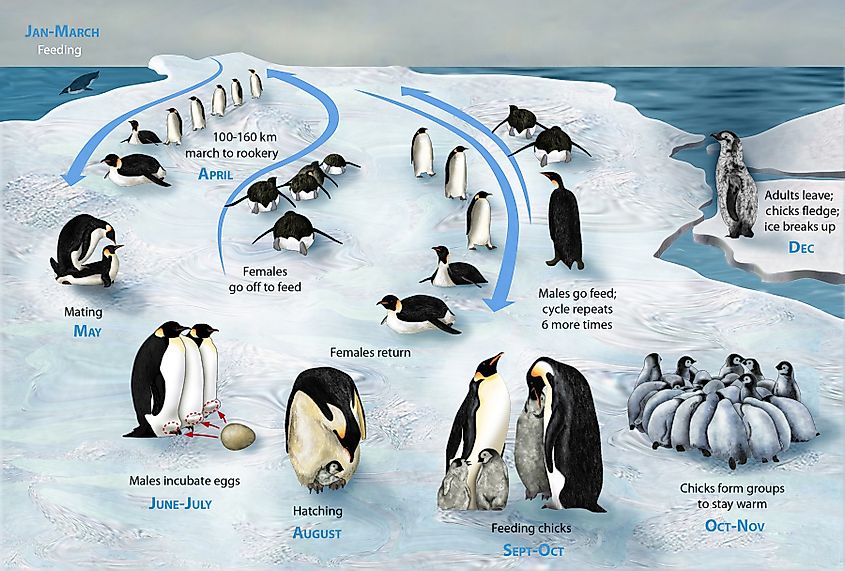
After around 2 months the egg will hatch. If the mother hasn’t returned from the hunt, the father will feed the chick with a substance it coughs out from his esophagus.
By July or August, females come back and look for their mate through a loud call. When they find their mate and chick, they feed the chick with fish they brought back from the hunt. They regurgitate food they’ve kept in their belly and then take over taking care of the young penguin. Then it’s the male’s turn to go out and hunt for food. By this time, the male would have already lost around 40% of his body weight.
From this point on, the male and female will take turns hunting and taking care of the chick, keeping the baby warm on their feet. After around a month and a half after hatching the chick can get off the parent’s feet and join other young penguins in a group called crèche.
By November chicks will begin to grow their protective feathers. Come December the slightly warmer weather breaks up the ice exposing more water. By this time the young penguins are big enough to swim and hunt for food on their own.
Emperor Penguin Adaptations
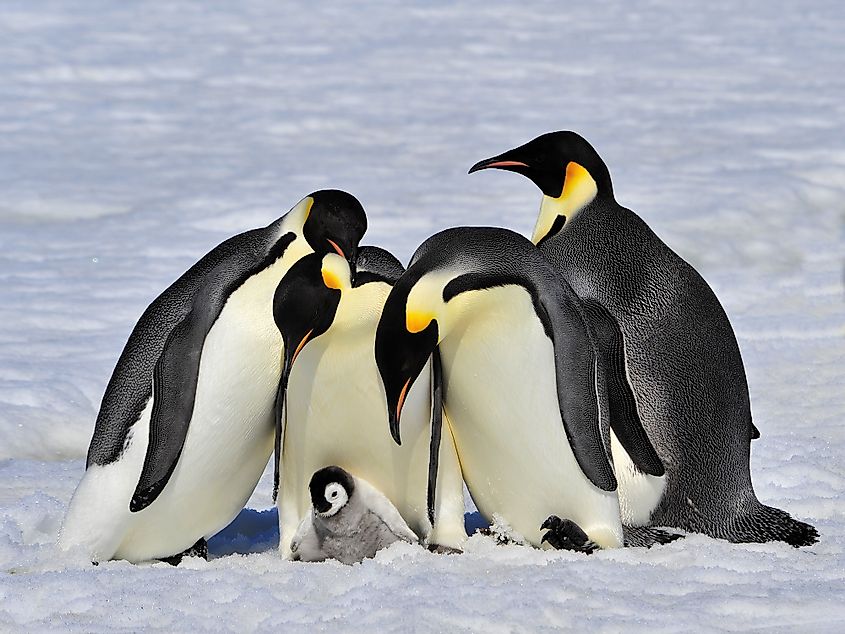
They have thick layers of fat that insulate them from the intense cold. The penguin’s fat reserves, which males use while they’re incubating the egg are around 3-4 centimeters thick.
Emperor penguins also grow several layers of scale-like feathers that protect them from the cold Antarctic winds. These animals also counter the cold by reducing their metabolism and blood flow to non-essential organs.
During harsh cold and windy weather, penguins in the colony will huddle, forming a circle. The youngest members of the colony will stay in the middle of the circle where it’s warmest and adults will stay in the outer circles. They will rotate and move in and out, taking turns being in the outermost layer which is the coldest part of the huddle.
Emperor Penguin Lifespan
Emperor penguins can live up to around 20 to 25 years in the wild. However, some records have indicated that the maximum lifespan of these penguins can be as high as 40 years. Death can be due to disease, predation, starvation, accidents, or the effects of aging.
Emperor Penguin Predators

Birds and aquatic mammals are known to hunt emperor penguins. On land, birds like Southern giant petrel are responsible for significant emperor penguin chick mortality.
In water, emperor penguins are attacked primarily by leopard seals and orcas. Leopard seals feed on both adults and fledglings while orcas prefer adults but attack penguins of all ages.
King Penguins vs Emperor Penguins
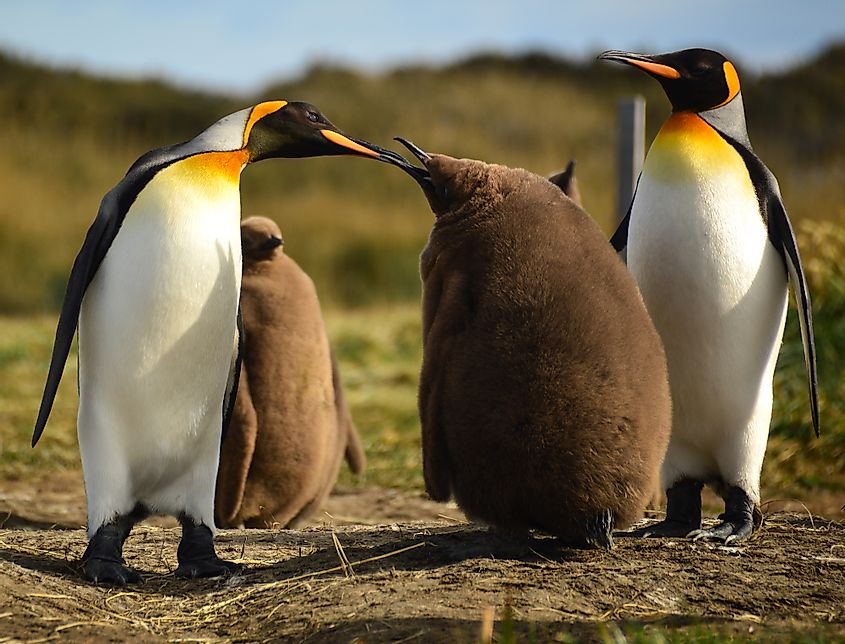
While they both belong to the genus Aptenodytes, these two species of penguins have many key differences. For one, king penguins are a lot smaller than emperor penguins. Their beaks are longer and less curved. King penguins also have more of a bright orange patch around the head and neck. Whereas emperor penguins have lighter yellow patches around the head.
There’s also a stark difference between their chicks. An emperor penguin chick is silver-grey with a black head and a white mask-like area around the eyes. King penguin chicks are covered in chocolate-brown plumage.
Emperor Penguin Population And Conservation Status
Scientists get estimates by counting individuals in colonies as seen in satellite images. Recent numbers are at 278,500 breeding pairs. They are currently listed as near threatened by the International Union for Conservation of Nature and is believed to soon become threatened.
Threats To Emperor Penguins
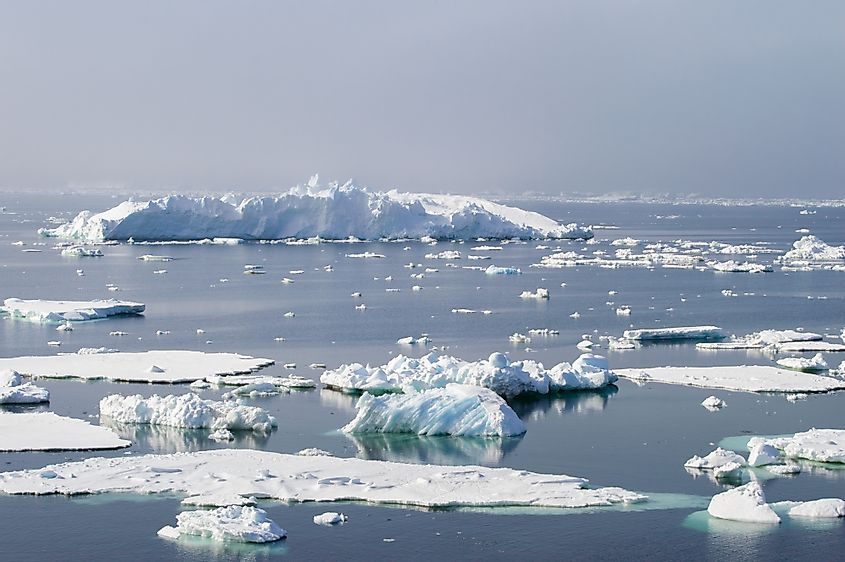
The biggest threat to emperor penguins is climate change. Global warming is reducing sea-ice, the emperor penguin’s habitat. In several regions of the Antarctic peninsula, sea ice cover has decreased by over 60% in the past 3 decades. Habitat loss has already reduced some colonies and scientists believe that at this rate, their population will drastically drop by the end of the century. Scientists have also predicted that nearly three-quarters of emperor penguin breeding colonies are susceptible to suffer the adverse effects of climate change in the coming years. As chick hatching times depend on temperature, warmer temperatures might cause chicks to hatch at times when food is scarce, decreasing their survival rates.
Emperor Penguin Facts
| Feature | Fact |
|---|---|
| Scientific Name | Aptenodytes forsteri |
| Classification | Bird |
| Weight | up to 40 kg |
| Body Length | 115-122 cm |
| Speed | 6-9 km/hour (swimming) |
| Diet | Carnivore: crustaceans, cephalopods |
| Lifespan | 20-25 yrs |
| Breeding Time | March-April |
| Egg Incubation | 65 days |
| Nature | Social, living in large colonies |
| Conservation Status | Near Threatened |











